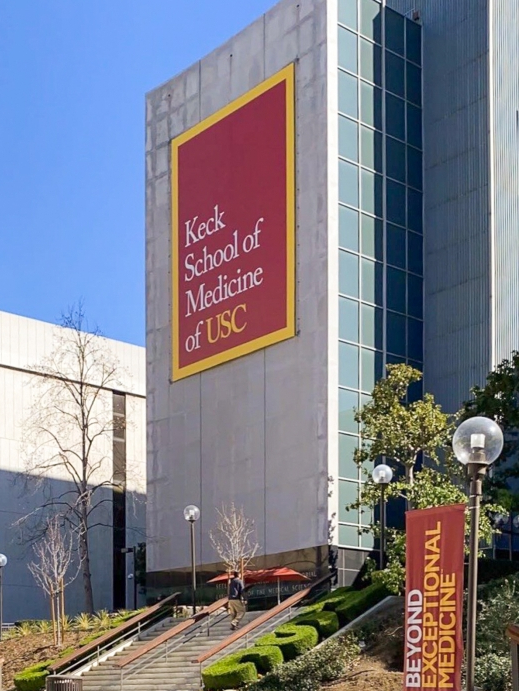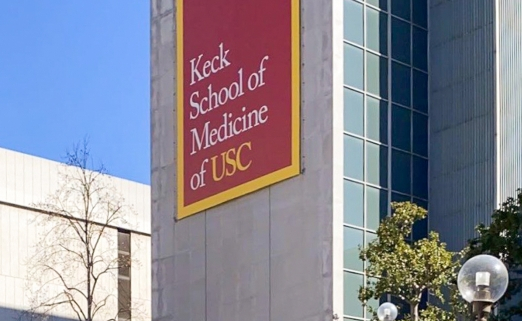University reveals contingency plan for pandemic

Despite USC’s fall on-campus activities resuming to near normalcy, the surge in coronavirus infections in Los Angeles County, induced primarily by the highly-infectious Delta variant, remains high. Amid increased governmental guidelines and restrictions, such as the reimplementation of indoor mask mandates across the county on July 17, the University outlined its contingency plans if there were to be a rapid rise of campus cases.
During a student media briefing on Aug. 26, Chief Health Officer Dr. Sarah Van Orman identified hospitalization rates as the key indicator in driving decisions about restrictive measures on campus.
Van Orman said that the most likely response to coronavirus outbreaks on campus would involve localized responses in certain areas and populations on campus, rather than shutting down in-person classes.
Though Van Orman said that the possibility of a full-scale lockdown is very unlikely and would have to be prompted by a particularly severe situation within the University, she noted that isolating certain groups in the event of a rise in cases remains an option.
“It is possible a student could be involved in [a situation where] a dorm is locked down, a class is locked down, a cohort is locked down,” Van Orman said. “So I don’t want people to minimize what could happen.”
In a Sept. 2 student media briefing, Van Orman said that the University has plans to increase quarantine space if positive cases rise in the USC community.
“We have a contingency plan to clear up the rest of the USC hotel,” Van Orman said. “And we also have the space at a downtown hotel, if needed, so we have that on reserve, but we absolutely have a plan to go up to 600 [spaces] if needed.”
The continued uncertainty of the coronavirus pandemic and the potential of worsening conditions has challenged all students, especially those whose families do not reside in the United States.
Since March 2020, many international students have navigated complicated VISA processes, struggled to learn in different time zones and spent large periods of time away from their homes.
Josh Pan came to USC this fall excited for a traditional, in-person college experience. Now, with L.A. County Public Health reporting daily case counts nearing 3,000, required masking and weekly testing, that confidence seems to be threatened.
Pan, a freshman from Croatia majoring in international relations, said he plans to stay on campus if the pandemic worsens and has hopes for how the University will support international students if online learning is reinstated.

“For those who cannot attend class in person, [it would be helpful] to have lectures that accommodate different time zones,” Pan said. “For example, having two lectures for one class for students in a timezone, say, in the Americas, and another one for Asia or Europe.”
Leslie Jia, a freshman majoring in international relations, global business, is in a similar position. Because of the strict quarantine policy in his home country of China, he would have to wait until the end of the spring semester to return home if his cohort or dorm is placed on lockdown.
“I hope that the University will just keep dorms open and allow us to live and study in dorms,” Jia said. “Us international students, we cannot just find a place to live.”
As for the University’s role in helping students readjust to life on campus, Jia said that while he is enjoying in-person classes this fall, he would like to see a limit to the on-campus events that encourage large gatherings of people, such as concerts and movie nights.
When it comes to these large, outdoor gatherings organized by the University, Van Orman said USC’s goal is to align events held on campus with the decisions of the surrounding community, attempting to balance the risks of gatherings with the desire for a sense of normalcy.
“We have a really closely packed student population, where people can work, people can spread [the coronavirus],” Van Orman said. “I think that’s the tension we’re all facing.”
Nick Charles Currie, a junior majoring in journalism who commutes to campus, said a pivot to partially or fully remote learning would not be a large adjustment for him. However, he said that being a commuter student has social disadvantages that might be worsened if remote learning is reinstated.
“[I hope the University will] find a way to make breakout rooms more common and get more human interaction through Zoom because that was something I was greatly lacking [during the last period of remote learning],” Currie said.
Brianna Tang, a freshman majoring in business administration, said she would like to see USC’s vibrant, on-campus student life maintained in the case of a shift to a partially virtual environment. For now, she said she is content with the efforts the University has made to ensure a safe return to campus and that she has felt supported by staff and her peers in adjusting to in-person learning.
“I think [the University has] done a pretty good job in this transition from the virtual learning setting throughout the last 18 months into on-campus and in-person, like how we’ve been doing the daily Trojan Checks and the weekly [coronavirus] testing,” Tang said.
However, if classes do return to a virtual format, Tang said she hopes the University will organize safe ways to interact with other students and faculty.
“I still want to feel like a part of the Trojan family, as we all do,” Tang said.

